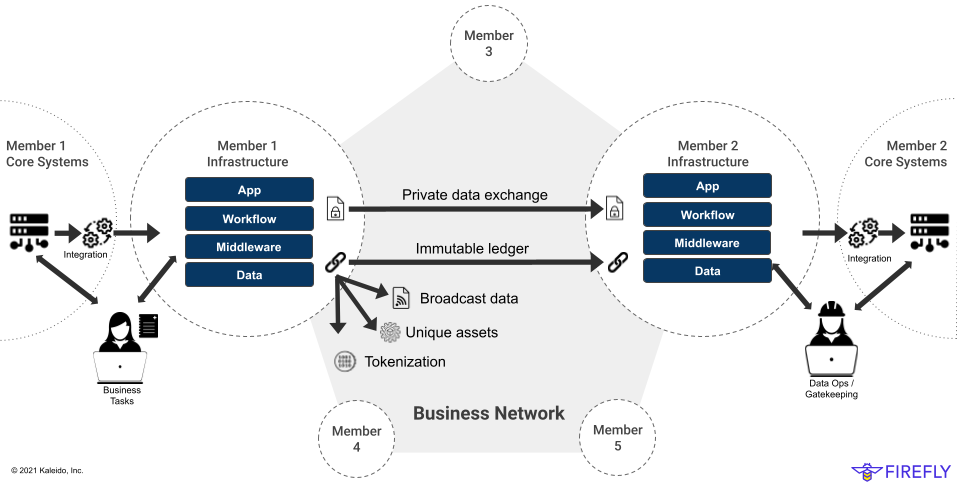Enterprise multi-party systems
Table of contents
Introduction
Multi-party systems are a class of application empowered by the technology revolution of blockchain digital ledger technology (DLT), and emerging cryptographic proof technologies like zero-knowledge proofs (ZKPs) and trusted execution environments (TEEs).
By combining these technologies with existing best practice technologies for data security in regulated industries, multi-party systems allow businesses to collaborate in ways previously impossible.

Through agreement on a common source of truth, such as the completion of a step in a business process to proceed, or the existence and ownership of a unique asset, businesses can cut out huge inefficiencies in existing multi-party processes.
New business and transaction models can be achieved, unlocking value in assets and data that were previously siloed within a single organization. Governance and incentive models can be created to enable secure collaboration in new ways, without compromising the integrity of an individual organization.
The technology is most powerful in ecosystems of “coopetition”, where privacy and security requirements are high. Multi-party systems establish new models of trust, with easy to prove outcomes that minimize the need for third party arbitration, and costly investigation into disputes.
Points of difference
Integration with existing systems of record is critical to unlock the potential of these new ecosystems. So multi-party systems embrace the existing investments of each party, rather than seeking to unify or replace them.
Multi-party systems are different from centralized third-party systems, because each party retains sovereignty over:
- Their application instance
- Their private data
- Their business processes
- Their proprietary business logic
- Their internal business processes and IT controls